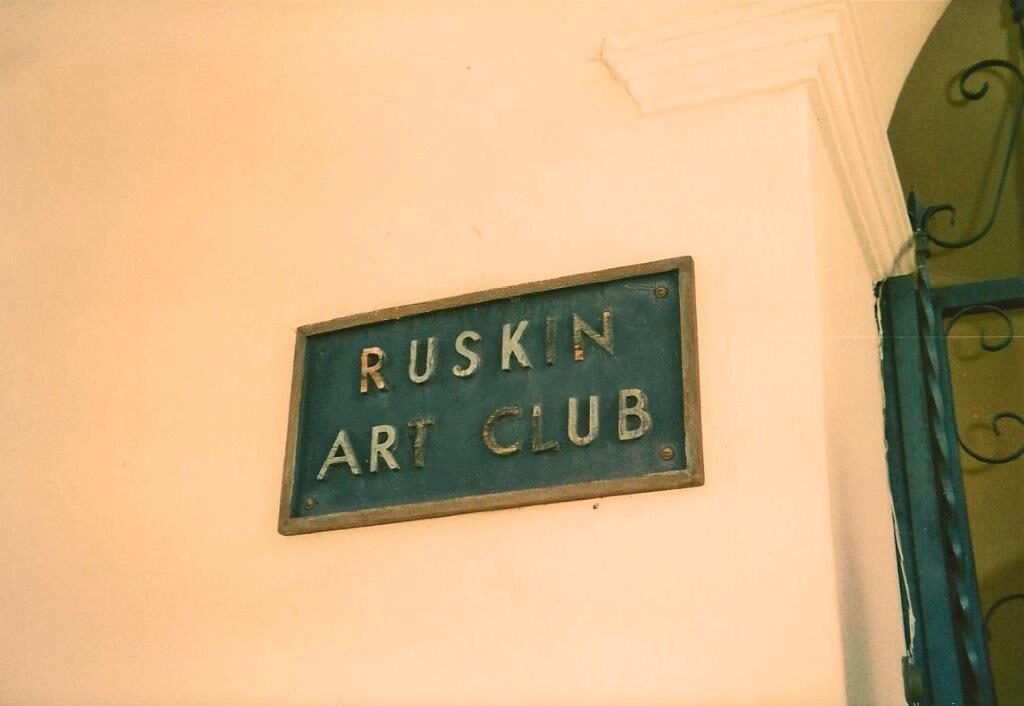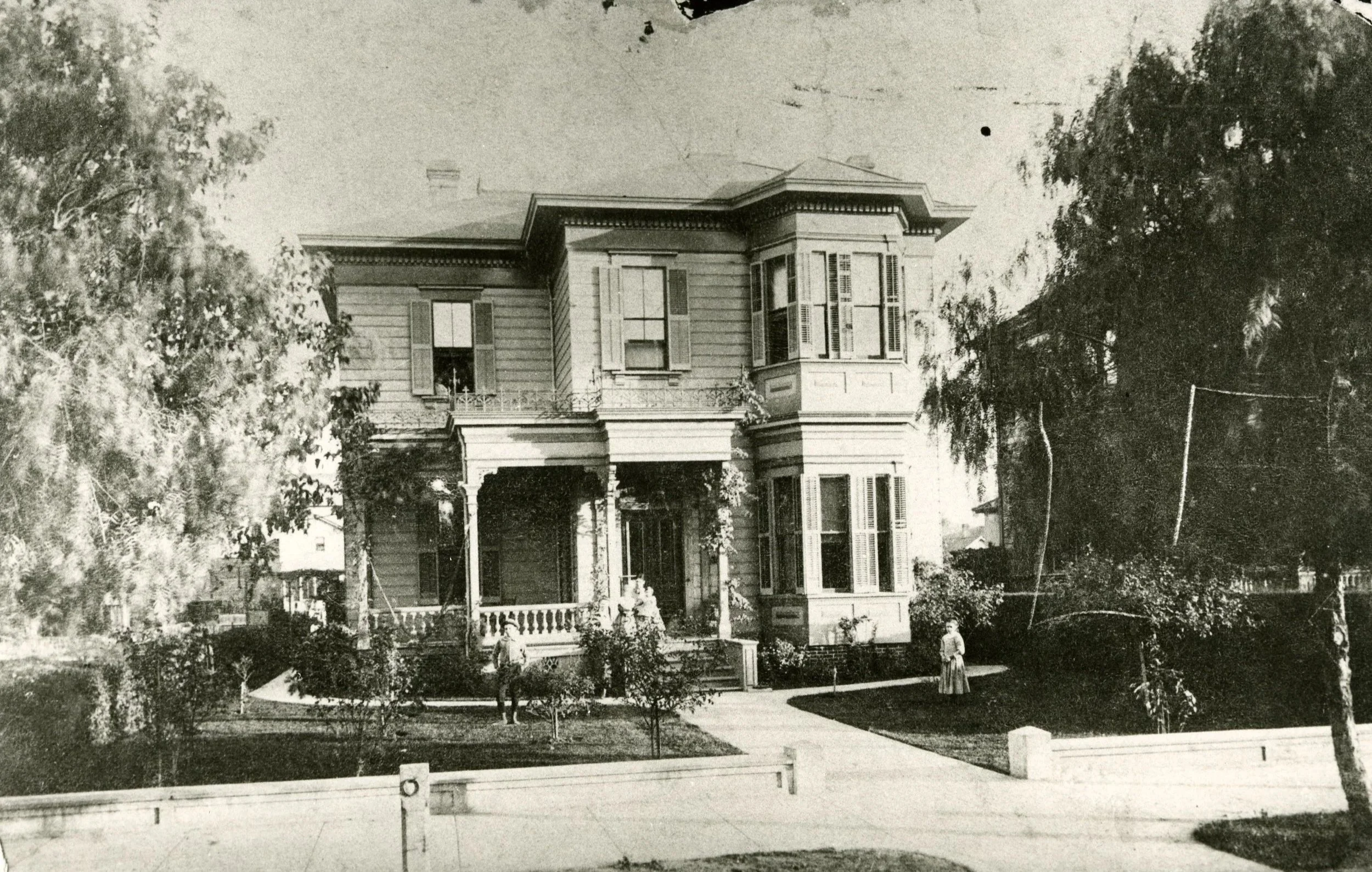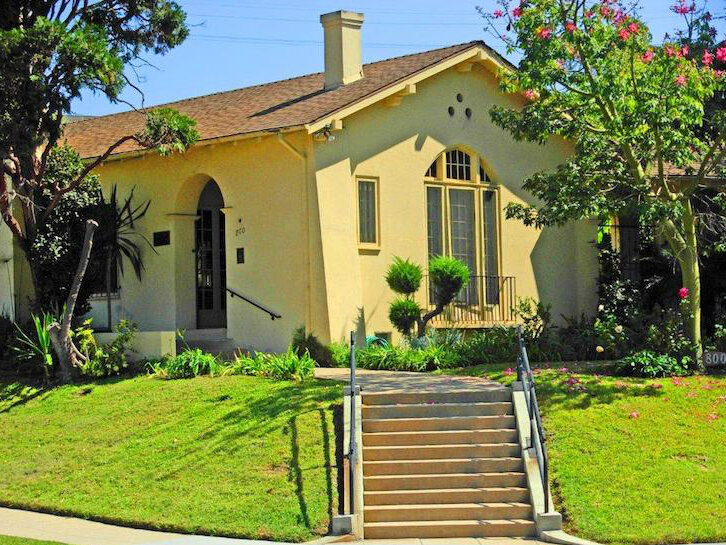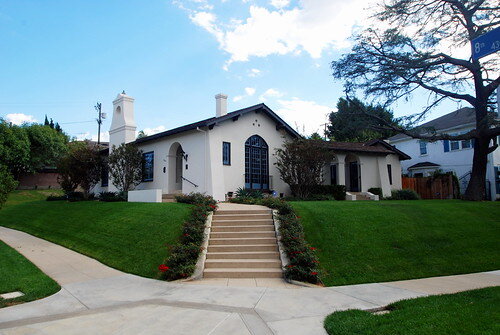The Ruskin Art Club was founded October 12, 1888, and is the oldest women's club in Los Angeles.
Portrait of Mary E. Boyce, founder of the Ruskin Art Club
The founding members of the Club were Mary E. Boyce, Fanny Brainerd, Dora Haynes, Lora Hubbel, and Mary Widney. Its original purpose was to study the technique and history of engraving and etching, inspired by founding member Mary E. Boyce's own collection of prints and extensive library of books on art. The name "Ruskin Art Club" was chosen by the original members at its first meeting, and is significant, as it signaled both an embrace of English art critic John Ruskin's philosophies about the Arts and Crafts movement, and the rights of women. The Club’s activities were designed by its members to give more meaning to their lives than Victorian society ascribed to them. Through "the earnest study of masterful works of art,” the club’s members would become sensitized to beauty in an increasingly mechanized society, and the club would make art available to a wider audience and thus elevate society's values as a whole. In addition, the appellation "Club" had great significance in 1880s Los Angeles, in which clubs were exclusively the domain of men.
The Club’s main activity was the annual course of study in the history of art, architecture, or archaeology. These courses of study, selected by the president, ran for 8 months every year. They consisted of lectures delivered by the members to the membership at the monthly Wednesday morning meetings. Programs were printed and distributed amongst the membership and were, in effect, syllabi, including a weekly schedule of specialized topics, the names of the members who would research and present on these topics, and the schedule of the presentations.
In April 1890, the Ruskin Art Club sponsored the first public art exhibition in Los Angeles
The entire engraving exhibit from the 1889 Paris Universal Exposition was sent to them on loan. The success of this exhibit resulted in a rapid growth in membership to the point where the members imposed a maximum membership of 100 women. The membership also soon outgrew its original meeting location, Mary Boyce’s drawing room, and began meeting in various locations around the city, including the Hamburger Department Store, and the Bella Union, Nadau, and Hollenbeck hotels. In the 1920s, the Club moved into its permanent home at 8th and Plymouth. Originally built by the Congregational Church Extension Society as a Sunday School Room and Parish House, the club occupied the building as its club house and headquarters until 2014, when it was sold.
The Club was an influential presence in Los Angeles and across the nation. Many of Los Angeles’s influential clubs were founded with Ruskin members in attendance, including the Friday Morning Club and the Ebell Club. The Ruskin also developed a longstanding relationship with another of Los Angeles’s important institutions, the Southwest Museum, and in particular with its curator, Hector Alliot. Alliot made his first address to the Club in 1905, and continued to work with them until his death in 1919, particularly in the design of the annual courses of study. In 1889, Mary Boyce attended a meeting of women’s clubs in the United States that resulted in the formation of the General Federation of Women’s Clubs, with the Ruskin as one of the original 60 founding members. Membership began to wane during the Depression, and in the 1960s, the Board of Directors amended the by-laws to permit men to join.
In 1988, the Ruskin Art Club celebrated its centennial, an event recognized in a number of official city commendations.
In the aftermath of that celebration, however, a period of crisis ensued: many members, mindful of the organization’s dwindling numbers and a societal climate in which club membership was in general decline, proposed to sell the clubhouse and regroup as a more informal, home-based association. The move was defeated by a single vote – Margaret Clausen’s, who, then, found herself faced with resuscitating the Ruskin Art Club without many of the older members.
In the 1990s, a new generation emerged: Jim Burns helped to develop a “Music in Mansions” concert series; composer Alfred Carlson, a student of Arnold Schoenberg, became Ruskin Art Club composer-in-residence; weaver Estelle Carlson launched a popular series of textile exhibitions; choral conductor and silent-movie musician Robert Mitchell performed regularly and the club sponsored a series of weekly luncheon programs. The club also organized summer concerts at the historic Southwest Museum in the Arroyo Seco. In 1997, local historian Joseph Ryan delivered the first “Ruskin” lecture on the history of the club, later published as a monograph, and led the ultimately successful campaign to designate the Ruskin Art Club headquarters as an official Los Angeles historical monument.
As the new century dawned, Gabriel Meyer, the Ruskin Art Club’s first male president, steered the club back to its earliest roots in the ideals of John Ruskin and in association with other historic California arts and crafts-oriented institutions: the Judson Studios in Highland Park, the Gamble House in Pasadena, the California Art Club, the Huntington Library and the Southwest Museum.
Bookplate, Ruskin Art Club Library of Archaeology, donated in memory of Hector Alliot, 1919
In addition, the club sought to organize itself more effectively for the future by shifting its legal status from a members-only organization to a non-profit public arts corporation. New younger members also spearheaded a host of new programs at the clubhouse in the first decade of the new century: chamber concerts, the “Jazz at the Ruskin” series, annual “Ruskin” Lectures, a symposium honoring the fiftieth anniversary of the death of Arnold Schoenberg, readers’ theater presentations, “Ruskin” study groups, a monthly poetry series in collaboration with Pasadena-based Red Hen Press, a “Modern Masters” literary series designed by the club’s literary programs director, Elena Karina Byrne, and a series of Saturday literary workshops led by local and nationally recognized writers.
However, by 2008, and the celebration of the 120th anniversary of the founding of the Ruskin Art Club, the physical condition of the nearly 90-year-old clubhouse was increasingly inhibiting the club’s mission and its ability to mount programs. In late 2013, the board of directors made the painful and difficult decision to sell the organization’s historic mid-Wilshire property, entrusting its fate to a talented restoration architect and to a new future as a private residence – albeit one that remains a Los Angeles cultural and historic monument. This move allowed the Ruskin Art Club, in its 125th year, to return to its original mission – not to manage property, however historic – but to advance the cause of Ruskin’s thought in the 21st century and to develop ways to support writers, artists, musicians, architects, and thinkers who espouse Ruskin’s values in Southern California.
[Sources: Joseph Ryan, “The Ruskin Art Club: A History” (Los Angeles: Ruskin Art Club), c. 1997); Gabriel Meyer, President of the Ruskin Art Club, October 2014]
FOR FURTHER READING, CONSULT:
Marlena Trafas, “The Ruskin Art Club of Los Angeles Turns 130” (2018)
Brendan Bernard, “The Women’s League That Time Forgot” (1998)
Bruce Beiderwell, “On Books and Places: John Ruskin continues to inspire and promote on his 200th birthday” (2019) ~ Source: Larchmont Chronicle







